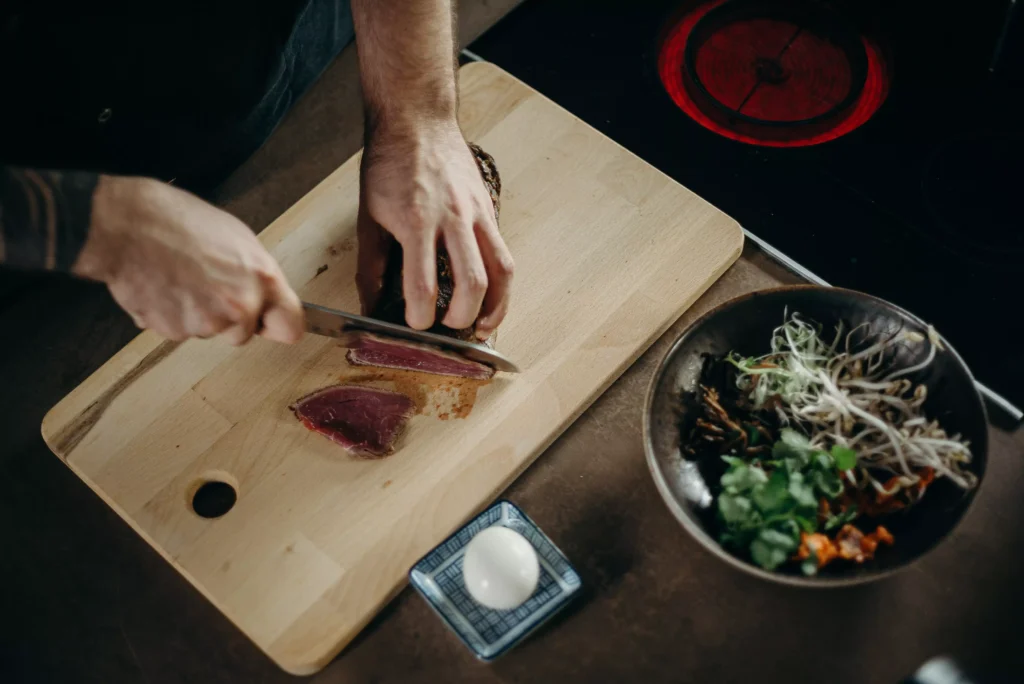Welcome to our blog post where we unravel the mystery of culinary measurements of How Many Pounds to a Cup? Whether you’re a seasoned chef or just starting your cooking journey, understanding how many pounds are in a cup can make all the difference in creating delicious and perfectly balanced recipes. So, let’s dive right in and get the facts here! In this article, we’ll break down the conversions for cups to pounds, explore other common measurement conversions, and provide handy conversion charts for both liquid and dry measuring cups. Get ready to become a kitchen whiz as we demystify these essential measurements. Let’s begin!
See also: This week in food tech: Upside Foods wastes no time debuting its cultivated chicken
What is a Cup?
What is a cup? Well, in the culinary world, a cup is a unit of volume measurement commonly used for both liquid and dry ingredients. It’s essential to have an accurate understanding of this measurement to ensure your recipes turn out just right.
When it comes to liquids, a standard measuring cup typically holds 8 fluid ounces or 240 milliliters. This means that one cup of water will weigh approximately 8.35 ounces or about 236 grams.
Now, let’s talk about dry ingredients. A cup of flour can vary in weight depending on factors such as how it was packed into the measuring cup. Generally, one levelled cup of all-purpose flour weighs around 4.5 ounces or roughly 128 grams.
It’s important to note that different ingredients will have different weights per cup due to their varying densities. For example, a cup of sugar weighs around 7 ounces (198 grams), while a cup of butter can weigh approximately 8 ounces (227 grams).
To accurately convert between cups and pounds, you’ll need to consider the specific ingredient you’re working with and its density. So next time you come across a recipe calling for cups instead of pounds or vice versa, remember these handy measurements!

How Many Cups are in a Pound?
How many cups are in a pound? This is a common question that arises when it comes to cooking and baking. The answer depends on what you’re measuring, as different ingredients have different densities.
When it comes to dry ingredients like flour or sugar, there are typically around 3-4 cups in a pound. However, this can vary slightly depending on the brand and how tightly packed the ingredient is.
For liquids like water or milk, there are approximately 2 cups in a pound. Again, this may vary slightly depending on the specific liquid and its density.
It’s important to note that these measurements are not exact and can also depend on factors such as altitude and humidity. That’s why it’s always best to use a kitchen scale for precise measurements if accuracy is important for your recipe.
The number of cups in a pound varies depending on what you’re measuring – dry ingredients will have more cups per pound compared to liquids. It’s always helpful to consult a conversion chart or use a kitchen scale for accurate measurements in your recipes!
See also: Unveiling the Great Mysteries of ‘Knorr Hat Nem’
How Many Pounds are in a Gallon?
How many pounds are in a gallon? This is a common question that often arises when it comes to converting measurements. While we may be familiar with using cups and tablespoons in our everyday cooking, gallons are typically used for larger quantities.
To understand how many pounds are in a gallon, we need to consider the density or weight of the substance being measured. Different substances have different densities, which means that the number of pounds per gallon can vary.
For example, water weighs approximately 8.34 pounds per gallon. So if you were measuring water, there would be about 8.34 pounds in one gallon.
However, other substances such as oil or milk have different densities and therefore will weigh differently. Oil weighs around 7.6 to 7.9 pounds per gallon, while milk weighs around 8.6 to 8.9 pounds per gallon.
It’s important to note that when converting between volume (gallons) and weight (pounds), you need to know the specific density of the substance you’re working with.
There isn’t a set answer for how many pounds are in a gallon as it depends on the density of the substance being measured. It’s always best to consult a conversion chart or use online calculators for accurate measurements based on specific ingredients or materials
What are the Measurements of Volume and Weight?
When it comes to cooking and baking, accurate measurements are essential for achieving the desired results. Understanding the measurements of volume and weight is crucial in following recipes correctly.
Volume is a measure of how much space something takes up, while weight refers to the heaviness of an object. In cooking, volume is typically measured using cups or spoons, while weight is measured using ounces or pounds.
Cups are commonly used for measuring both liquid and dry ingredients in recipes. A cup contains 8 fluid ounces of liquid, which is equivalent to approximately 236 milliliters. However, when it comes to measuring dry ingredients like flour or sugar, a cup may have different weights depending on the ingredient’s density.
On the other hand, weight measurements such as pounds are more precise when it comes to determining quantities accurately. For example, a pound equals 16 ounces or approximately 454 grams.
It’s important to note that volume and weight cannot always be directly converted into each other because different substances have varying densities. Therefore, it’s best to consult conversion charts or use specific measurement tools for accuracy.
By understanding these measurements of volume and weight in your culinary adventures, you’ll be well-equipped to follow recipes with confidence and achieve delicious results every time!

What is the Conversion Chart for Liquid Measuring Cups?
Liquid measuring cups are an essential tool in any kitchen, allowing you to accurately measure and pour liquids for your recipes. But what if a recipe calls for a specific amount of liquid in pounds instead of cups? Understanding the conversion chart for liquid measuring cups can help you easily determine how many pounds are equivalent to a cup.
To convert liquid measurements from cups to pounds, it’s important to consider the density or weight of the particular liquid being measured. Different liquids have different densities, which means that their weights can vary even when measured in the same volume.
For example, water is often used as a standard measurement because it has a density close to 1 gram per milliliter. Therefore, 1 cup of water weighs approximately 8.35 ounces or 0.52 pounds.
However, other liquids such as oils or syrups may have different densities and will weigh more or less than water for the same volume. It’s crucial to refer to specific conversion charts or online resources that provide accurate information on converting various types of liquids from cups to pounds.
Remember that when using a conversion chart for liquid measuring cups, precision is key. Ensure you’re using accurate measurements by using calibrated measuring tools and following the guidelines provided by reliable sources.
Next time you come across a recipe calling for an ingredient measurement in pounds rather than cups, consult a trusted conversion chart specifically designed for liquid ingredients. This way, you’ll be able to confidently prepare your recipes with precise measurements and achieve delicious results every time!
How Many Pounds to a Cup? What is the Conversion Chart for Dry Measuring Cups?
Dry measuring cups are commonly used in cooking and baking to measure ingredients such as flour, sugar, and spices. While it may seem simple to measure these dry ingredients by volume, it’s important to note that different ingredients have varying weights per cup.
To ensure accuracy in your recipes, it’s helpful to refer to a conversion chart for dry measuring cups. This chart provides the approximate weight of common dry ingredients in both ounces and grams per cup.
For example, one cup of all-purpose flour weighs approximately 4.5 ounces or 128 grams. Similarly, one cup of granulated sugar weighs around 7 ounces or 200 grams. Keep in mind that these measurements are approximate and can vary slightly depending on factors such as how densely the ingredient is packed into the cup.
By using a conversion chart for dry measuring cups, you can easily adjust your ingredient quantities based on weight rather than volume. This can be especially useful when following recipes from different sources that provide measurements in either weight or volume.
So next time you’re baking up a storm in the kitchen, make sure to consult a conversion chart for accurate measurements with your dry measuring cups!
Conclusion
Understanding the relationship between pounds and cups can be incredibly helpful in the kitchen. Whether you’re following a recipe or trying to convert measurements, having a clear understanding of how many pounds are in a cup can save you time and ensure your dishes turn out just right.
In this article, we’ve explored what exactly constitutes a cup and how many cups are in a pound. We’ve also discussed the measurements of volume and weight, as well as provided handy conversion charts for both liquid and dry measuring cups.
Remember that when it comes to converting between pounds and cups, accuracy is key. Using precise measurements will help ensure that your recipes turn out perfectly every time.
So next time you find yourself asking “how many pounds to a cup?” remember to refer back to this article for all the facts you need. With this knowledge at your fingertips, you’ll be able to confidently navigate any culinary adventure that comes your way!
Get ready to impress with your cooking prowess as you effortlessly convert between pounds and cups like a pro. Happy cooking!

